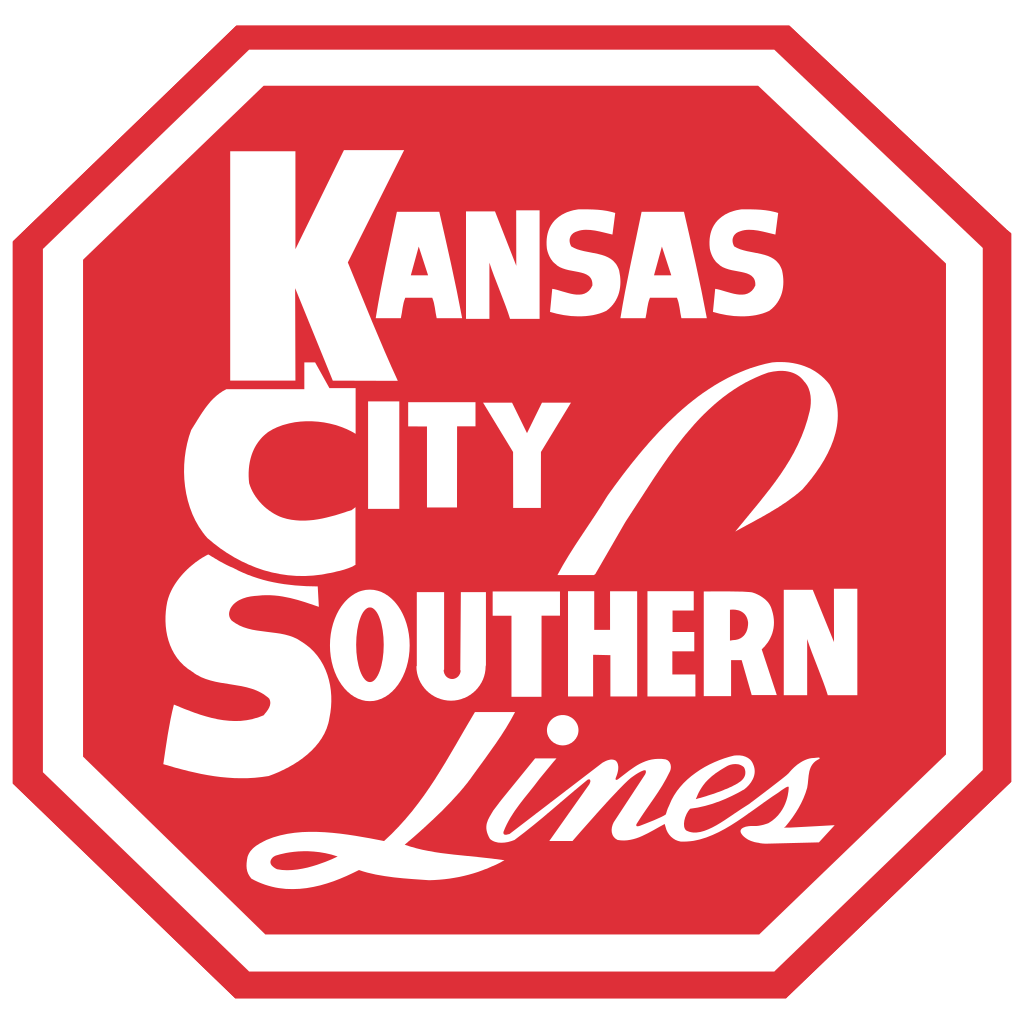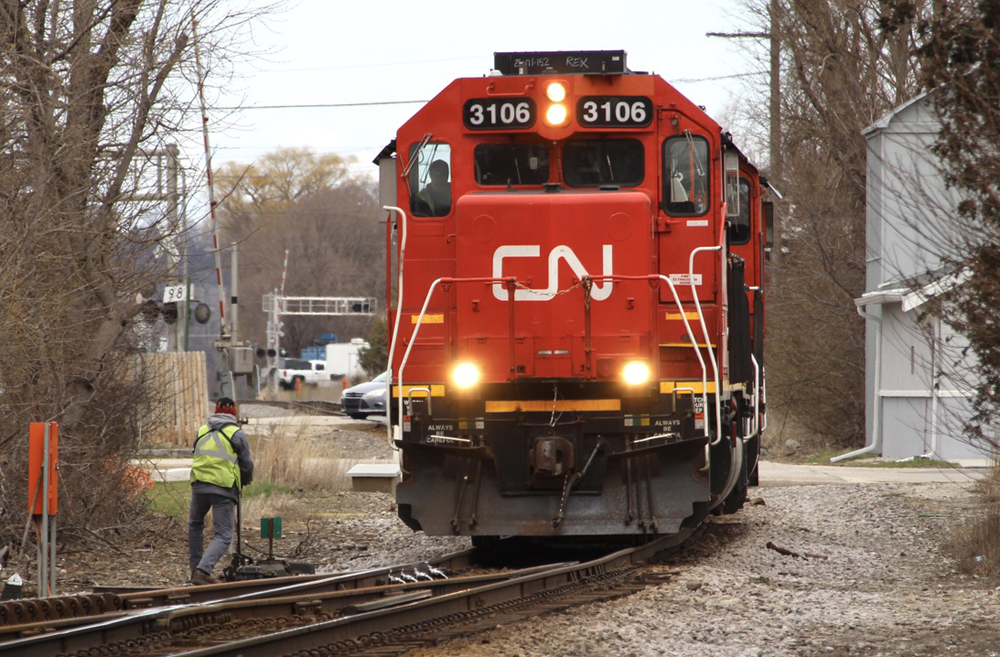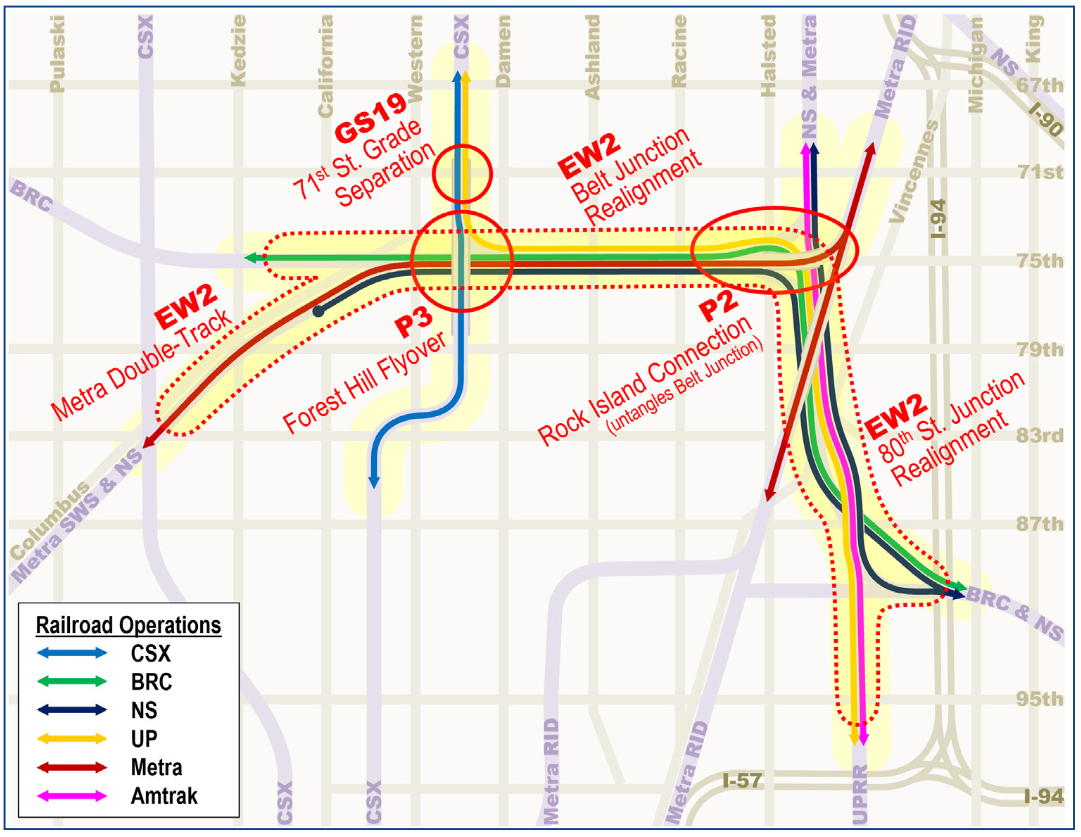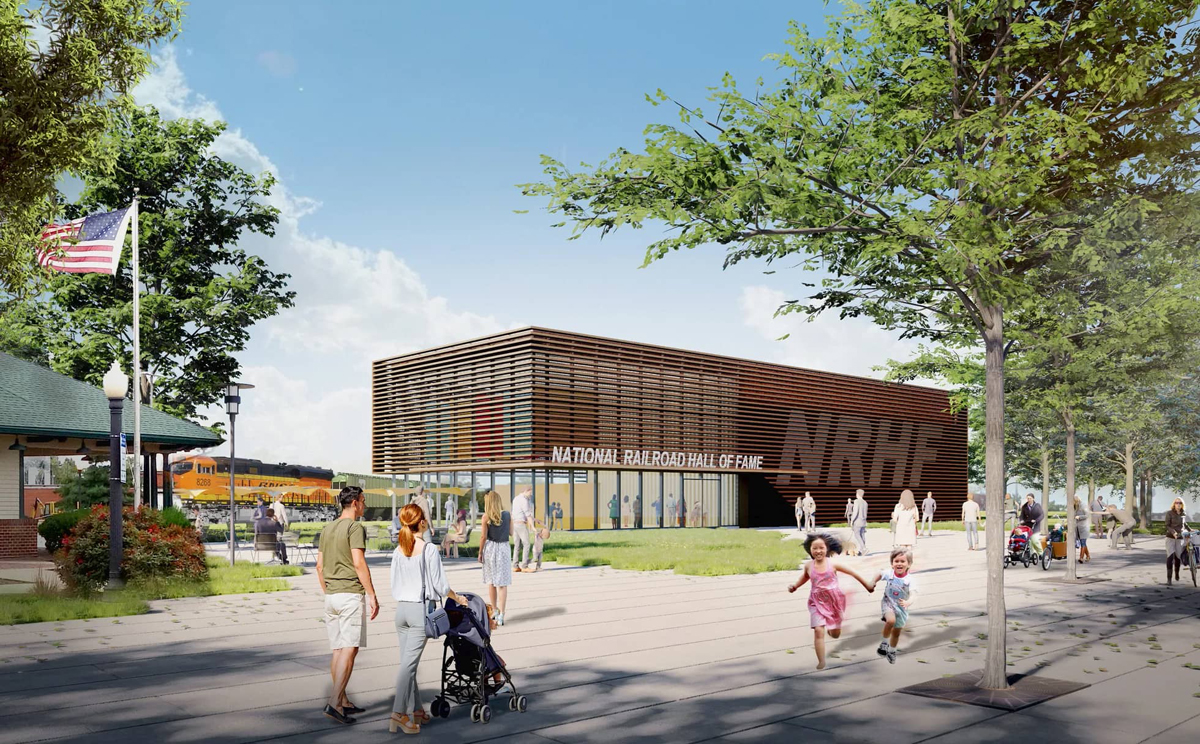“You have to assume railroads are not going to sit still,” KCS Executive Vice President Brian Hancock told an investor conference earlier this month.
The path to automation is far easier for railroads than trucks, Hancock says, and KCS aims to automate its operations over the next seven years using a combination of positive train control and advanced train control technology.
And Hancock says autonomous trucks may help railroads’ intermodal networks become bigger players in e-commerce by hauling containers between terminals and nearby distribution centers.
Hancock, in a chat with Morgan Stanley analyst Ravi Shanker, outlined the role railroads play in supply chains. Railroads, intermodal, and trucks all participate in the inbound supply chain that links suppliers, manufacturers, and warehouses. Trucks dominate the outbound supply chain linking warehouses with brick-and-mortar retailers as well as directly with consumers through e-commerce deliveries.
These roles won’t change, even as supply chains get tighter and faster, with smaller shipments moving shorter distances from warehouses that are ever closer to consumers.
“When you think about supply chain design and how it’s evolved, it really is creating an environment where rail, intermodal, and truck can play an enormous part,” Hancock says.
In coming years technological advancements — including platooning, electric rigs, and driverless trucks — will reduce trucking costs below the current $1.56 per mile of a typical diesel rig, Hancock says.
Although trucking costs would become lower than intermodal’s $1.27 per mile costs with single-driver platooning, it would not be until full autonomy arrives that trucking costs would fall below carload’s costs of 91 cents per mile, he says.
No matter what the cost advantage, trucks would not be able to siphon away too much rail traffic because there would not be enough capacity on a highway system that’s already gridlocked much of the day in major urban areas, Hancock contends.
If all 4,600 carloads of grain that are waybilled daily were diverted to highways, for example, it would take 16,000 trucks. That’s enough trucks, Hancock says, to stretch for 205 miles on already crowded roads that would need massive taxpayer-financed investment in new capacity.
Railroads, on the other hand, fund their own infrastructure and can more readily expand capacity through technology, Hancock says.
So how do railroads compete?
“We move the railroads toward what we call advanced train control,” Hancock says. “Not autonomous, because autonomous means there’s nobody engaged. We always see there will be someone in the cab of a train.”
PTC is the backbone of an automated railroad. Layered on top: Advanced train control systems that automatically start and stop trains, coordinate meets and passes, and permit much tighter train spacing than is possible today with fixed signal blocks.
Hancock says KCS will have advanced train control systems in place within the next three or four years. But changes to regulation and labor contracts would be required to take full advantage of the technology, Hancock says.
Once those are in place, railroads would be in a position to more reliably move larger volumes of intermodal traffic to terminals near warehouses and fulfillment centers, Hancock says.
Autonomous trucks could deliver containers to warehouses at off-peak hours between 10:30 p.m. and 5 a.m. when highways are least congested.
“We think there’s a big opportunity for most communities,” Hancock says.
He spoke on Jan. 7 at the Morgan Stanley Sixth Annual Auto 2.0 Conference.















I retired from the KCS Railway, not KCS Railroad. Nest comment: If driverless trucks were to follow directions set out by MapQuest or other forms, they would end up on roads that don’t exist, private entrance gates, etc. As example map quest wants me to go on a ‘thru’ road which is a lane from a road to a clubhouse.
Your words are “marked” as requested @ Jim Norton. Stop hitting the snooze button:
https://www.zdnet.com/article/butter-run-first-autonomous-truck-completes-cross-country-freight-trip/
I’m curious to see how well these driverless trucks will perform in some weather event like a major blizzard with heavy snow. Imagine hundreds of semi’s stuck in the snow, probably many “jackknifed,” in the Colorado Rockies or I-80 in Indiana. Who’s going to arrange for all these separate massive vehicles to extricate themselves from snowdrifts and other snow related entanglements?
Wont happen? I dont know if it is still out there, but in November a company got the ok from Illinois to start testing a driverless semi between Rockford and Chicago.
It seems to me that rail has a significant advantage over highway when it comes to whatever degree of automation they choose to pursue, because most rail operations are on private property where the owners / operators control the equipment, infrastructure, training, access, etc.
However rail already enjoys a huge advantage in direct labor cost per unit of lading transported, and since they have to actually pay to acquire, develop and maintain their own infrastructure it is difficult to for me understand how the investment in a high degree of automation would pay off, especially as Mr. Hancock asserts “…We always see there will be someone in the cab of a train.”
The railroads might find a way to reduce from two people on board a road train to one person, maybe with off board people along the route to help out as BNSF tried to negotiate a few years ago. They have already reduced to a one person crew in some yard activities where the crewmember operates the locomotive using a remote and is on the ground to operate switches, couple and uncouple cars, etc.
In my area (metro Toronto) there is a very high concentration of trucks, many of them driven very badly on public roads that I and others are also using. I would welcome any application of automation or other technology that would improve this situation. Even a relatively simple speed govenor and lane-keeping system would be a major improvement. Getting the regulations to establish anything like this would be challenging because the trucks move across North America so somehow there would need to be a broad consensus and standard that would apply at least across the U.S. and Canada. I think it is more of a political / ideological issue than a technical one.
As far as I know we are not pursuing PTC in Canada but again I would welcome technology that would help to reduce accidents such as the 2012 Via 92 overspeed derailment that happened up the road from my house. If the infrastructure for PTC can also improve rail operations and economics so much the better.
Mark my word. Driverless trucks on American highways will never happen.
PS This is a rail operation from loading dock to receiving dock.
As a model for crewless trains what about a variation on the RDC. A CoFDC(Container on Diesel flat Car). Plug them together for a train and then they could self propel to the receiver’s siding/dock. No hump yards needed. h
Yes I know never happen. To much Buck Rogers.
Steven Foster, Paul Bouzide…EXACTLY! As for Steve Berg, driverless trains in Australia? Its not called The Outback for nothing. No road crossings and no cities for hundreds of miles along these lines…
The ultimate in platooning trucks is on rail! Load em in Chicago and unload em in LA. Wait, they already do that. Simple enough.
Public policy will determine how autonomous vehicles are dealt with. The rails have distinct advantages in LD transportation, even taking autonomous and/or electric trucking into consideration. If public policy recognizes rail’s inherent efficiencies, there will be shiny, well used rails forever.
If the highway lobby has its way, we can look forward to more and more congestion and ever expanding lane construction to accommodate the demand.
Public policy got us to where we are today. We’ll see where it takes us in the future.
SAE level 5 autonomous vehicles ain’t gonna happen. Platooning semis on US interstates ain’t gonna happen.
There may be a very *few* applications of unmanned freight trains, but let just one Chatswoth, CA or Lac Megantic, QC happen and that is the end of such a silly experiment.
US capitalism is deperate to get more blood out of a dry stone. All this stuff is nonsense and the sooner capitalism is subject to modern high regulation, the better. You need only to consider the mess Boeing and the 737 Max has become or recall the financial crisis and “light touch” financial regulation of Clinton and Bush to understand the gravity of the problem.
The future of all fully automated forms of transportation will depend on their early accident experiences. If things don’t go as planned accident-wise during their widespread introduction, the costs of their liability insurance (if they can even get it afterwards) will be so high as to form a major barrier that will eliminate the projected cost savings.
He makes some valid points. And I like that he adds cost per mile projections.
But I agree with other posters here: the source and destination intermodal dray – despite the valid concerns about congestion without hope of capacity relief in major metros – is by far the hardest thing to achieve in autonomous trucking. It’s the LAST step, not the first, and it’s a long long way off. Even at “off hours” I think. The metro urban/suburban environment is just a very difficult nut to crack.
In response to Troy Staten, those 16,000 extra trucks are for every single carload of grain waybilled daily in the United States. Not just one grain train. And of course, that point does nothing to address the forthcoming horrendous losses in intermodal volume brought upon by future trucks (electric, platooning, autonomous etc.). All these railroad people know how to do is make vague generalities instead of actually giving numbers or data, which leads me to beleive that this is all posturing. The Tesla Semi launches this year. It’s over guys, just accept it. There is no way the railroad industry will be able to take on Elon Musk. The decade for railroads will be a bloodbath.
In response to Trains User 16,000 extra trucks per day is just one unit grain train. For things like unit grain trains the railroads still have a huge advantage in fuel economy. Labor costs are not the reason rail is at an advantage to trucks. I am not saying that the railroads don’t have issues far from it.
Why is it so hard for them to admit that autonomous trucking means that railroads are dead? If even just platooned trucks fall below the cast of intermodal, that is already a massive portion of revenue just wiped out! As for the grain comparison, 16,000 extra trucks per day is a drop in the bucket compared to total highway traffic today. Complain all you want about the extra trucks, but did people complain when scores of freight left rail for the roads starting in the 1950s, continuing all the way until today? Of course not. If the railroads were smart, they would just accept the inevitable and start investing in autonomous trucking technology companies. By selling off most of their properties and right-of-ways, they could make a tidy profit, and using their trucking fleets, they could continue to shift freight.
I am still waiting for flying cars!
Australia currently has driverless trains…so, just a matter of time for here….no if’s, and’s, or but’s about it.
Dream on. And George Jetson will be at the controls. There wil be no autonomous trucks…have you ever been on I80 or any other xway around Chitown? Do you think an autonomous truck can do it? Ummm, no. Do they know when it snows or rains? No. Do they know tire condition, no. It’s a fantasy, along with a railroad running on a PTC system the Europeans laugh at.